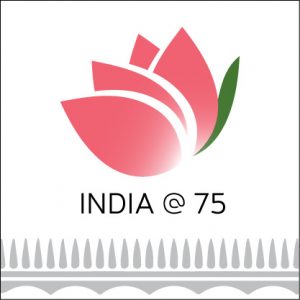
Indian students are amongst the highest number of foreign students in several leading universities across the globe. For financial reasons, foreign education is available only to those who are able to afford it — whether by scholarships or private funds. As the Government of India gradually opens up India’s Higher Education sector to foreign universities, Sweety Supriya examines the various provisions, and their possibilities.
Foreign universities and higher educational institutions are at present not permitted to establish campuses in India, except in Gujarat’s International Finance Tec-City (GIFT). However, the Government of India (GoI) is set to open doors to Foreign Higher Educational Institutions (FHEIs) to set up campuses in India through new regulatory initiatives. The first initiative towards this has been taken by the International Financial Services Centres Authority(IFSCA) by notifying a regulation on ‘Setting up and Operation of International Branch Campuses and Offshore Education Centres Regulations 2022’.
The second initiative was the announcement by the University Grants Commission — ‘Setting up and Operation of Campuses of Foreign Higher Educational Institutions in India Regulations 2023’. Against this backdrop, this post outlines the various steps taken by the GOI to allow the entry of FHEIs, and their potential impact on higher education sector in India.
*
Globalisation, which has transformed world trade, communications and economic relations in the latter half of the 20thcentury, has also had a profound impact on education in general, and higher education in particular. The signing of the General Agreement on Trade in Services (GATS) in 1995 with the formation of the World Trade Organisation (WTO) reinforced this process in education. Consequently, foreign direct investment (FDI) up to 100 per cent in education (including higher education) has been allowed in India under the ‘automatic route’ without any sectoral cap since February 2000; yet, the present legal structure in India does not allow granting of degrees by foreign educational institutions in India.
Thus, no off-shore education centres or campuses (OECs) of any foreign university in India has yet been established. There are, however, several foreign universities and education service providers that operate in India through twinning programmes. In order to facilitate the entry of FHEIs, the GoI introduced the Foreign Educational Institutions (Regulations of Entry and Operations) Bill 2010 in Parliament, which proposed to facilitate globally renowned institutions to participate in India’s higher education sector; the bill eventually lapsed in 2016.
In due course, GoI published the National Education Policy (NEP) 2020 which paved the way for largescale, transformational reforms at both school and higher education levels. One of the important reforms envisioned in NEP 2020 is to make India a global study destination providing premium education at affordable costs; it states that
high performing Indian universities will be encouraged to set up campuses in other countries, and similarly, selected universities e.g., those from among the top 100 universities in the world will be facilitated to operate in India. A legislative framework facilitating such entry will be put in place, and such universities will be given special dispensation regarding regulatory, governance, and content norms on par with other autonomous institutions of India.
In accordance with the objectives of NEP 2020, the GoI recently undertook two major initiatives to facilitate entry of FHEIs in India. First, the Union Finance Minister Nirmala Sitharaman announced in the Annual Budget speech for 2022–23 that world-class foreign universities and institutions will be allowed to offer courses in financial management, fintech, science, technology, engineering and mathematics in GIFT City free from domestic regulations. The GoI subsequently issued a notification under the International Financial Services Centres Authority Act 2019 (IFSCA Act) to classify the aforementioned courses offered by foreign universities or foreign institutions in GIFT City as a ‘financial service’. The GoI therefore enabled FHEIs to set up international branch campuses/OECs in GIFT City, though limited to offering only the aforementioned courses. In order to facilitate this process, IFSCA has issued further a regulation on ‘Setting up and Operation of International Branch Campuses and Offshore Education Centres Regulations 2022’, which came into effect on 12 October 2022. It is important to mention here that GIFT City is a Special Economic Zone(SEZ); as such, domestic rules and regulations of the UGC, All India Council for Technical Education (AICTE), etc do not apply.
Second, the UGC issued a public notice on 5 January 2023 seeking the comments on the draft of its ‘Setting up and Operation of Campuses of Foreign Higher Educational Institutions in India Regulations 2023’ (referred to earlier) from all stakeholders by 18 January 2023. As per this draft regulation, FHEIs seeking to set up campuses in India have to fulfil the following two criteria:
- If the applicant is a foreign university, it should have secured a position in the top 500 institutions of overall/subject-wise global rankings, as decided by the Commission from time to time;
- In the case of a foreign educational institution, the applicant should be a reputed institution in its home jurisdiction.
A Committee constituted by the UGC will assess each application on merit, as specified in the Regulation, and make recommendations thereof. The Draft Regulation requires that qualifications/degrees awarded to students in Indian campuses shall be recognised and treated as equivalent to the corresponding qualifications awarded in the home jurisdictions of the FHEIs.
UGC Regulations intend to allow entry of foreign universities as well as other types of educational institutions (such as non-degree and diploma granting institutions). Some exceptions will be made for FHEIs compared to domestic institutions: for example, FHEIs will have autonomy in devising the admission procedure, fee structure and recruitment of faculty; the Regulation does not specify infrastructure requirements to be buill on the campus (like there is no minimum square footage requirement, which is strictly followed in case of setting of domestic educational institutions). These will give FHEIs flexibility in their operations.
Assessment of Regulatory Initiatives for FHEIs in India
Proponents of the abovementioned regulations argue that it would solve issues of access, enabling Indian students to gain quality higher education in the country at much lower relative costs, not allowing the outflow of our foreign exchange reserves, creating competition and incentivizing local institutions to become internationally competitive, creating new institutions and infrastructure, and generating employment opportunities.
These arguments are based on the assumption that top universities of the world will open their campuses in India, and that the quality of these branch campuses will be at par with the quality of education imparted in their respective parent jurisdictions and thus, Indian students will stop migrating abroad for higher studies. These assumptions appear to be based on false premises as they neglect the importance of geographical or locational advantages of institutions on which various parameters of quality (availability of faculty with excellent academic record and reputation, admission of high-performance students, amenities for good quality of life, good employment opportunities) depends. This is likely the reason why most of the top-ranked universities have not opened overseas branch campuses anywhere in the world.
Alongside, research has reflected the concern that FHEIs would impede the development of indigenous and critical research within the domestic university education system, aggravate the tendencies towards commercialisation, and strengthen the stranglehold of neo-liberal ideas in Indian academia. Privatisation of higher education and the inclination to allow entry of FHEIs is leaning towards the greater role of private providers and reliance on market principles in shaping the higher education sector. All these measures are based on the assumption of perfect competition, which guarantees the fulfilment of Pareto efficiency conditions implying the efficient allocation of resources. However, given the inequality in initial distribution of resources in this sector, the concern of equitable distribution remains unaddressed in a typical market. Also, since higher education is recognised as a public or quasi-public good, the market fails in the Higher Education sector because of its lack of concern for social need and the huge externalities that it generates.
In neo-liberal contexts where privatisation and globalisation of Higher Education is promoted, the idea of choice is related to consumer demand, which should not be confused with social need. Freedom to choose courses or institutions depends mainly on ‘command over resources’ and ‘market capacities’. A student with adequate resources will gain access to any institution of their choice, while deserving students from less economically privileged backgrounds may not gain access due to lack of resources. Mark Olssen (1996) rightly said that, under the guise of consumer sovereignty, markets protect privilege; they deny all students equal access to education; they deny all students exposure to alternative perspectives; they limit the community’s progress as a democratic country, and they undermine the basis of its integration, socially and politically.
*
Under these circumstances, the recent regulatory reforms raise concerns about their ability to attract top universities of the world to establish branch campus in India. It also raises concern about the impact of foreign university programmes on equity, quality and efficiency of higher education in India.
*
The views expressed here are those of the author and not of the ‘South Asia @ LSE’ blog, the LSE South Asia Centre or the London School of Economics and Political Science.
This blogpost may not be reposted by anyone without prior written consent of LSE South Asia Centre; please e-mail southasia@lse.ac.uk for permission.
Banner image © Susan Q. Yin, ‘Stadsbiblioteket, Stockholm, Sweden’, 2018, Unsplash.
The ‘India @ 75’ logo is copyrighted by the LSE South Asia Centre, and may not be used by anyone for any purpose. It shows the national flower of India, the Lotus (Nelumbo nucifera [Gaertn.]), framed in a graphic design of waves, and spindles depicting depth of water. The logo has been designed by Oroon Das.
*







